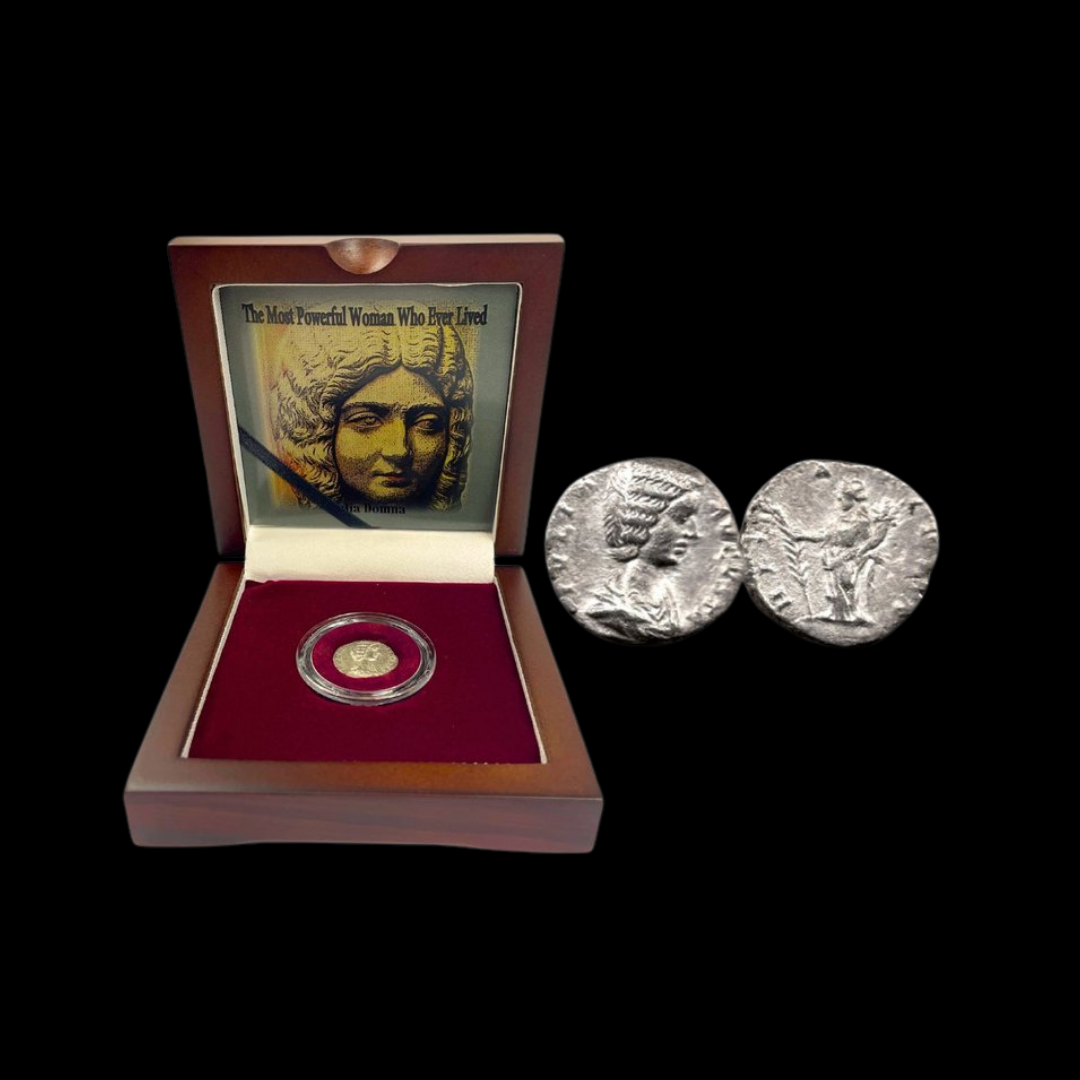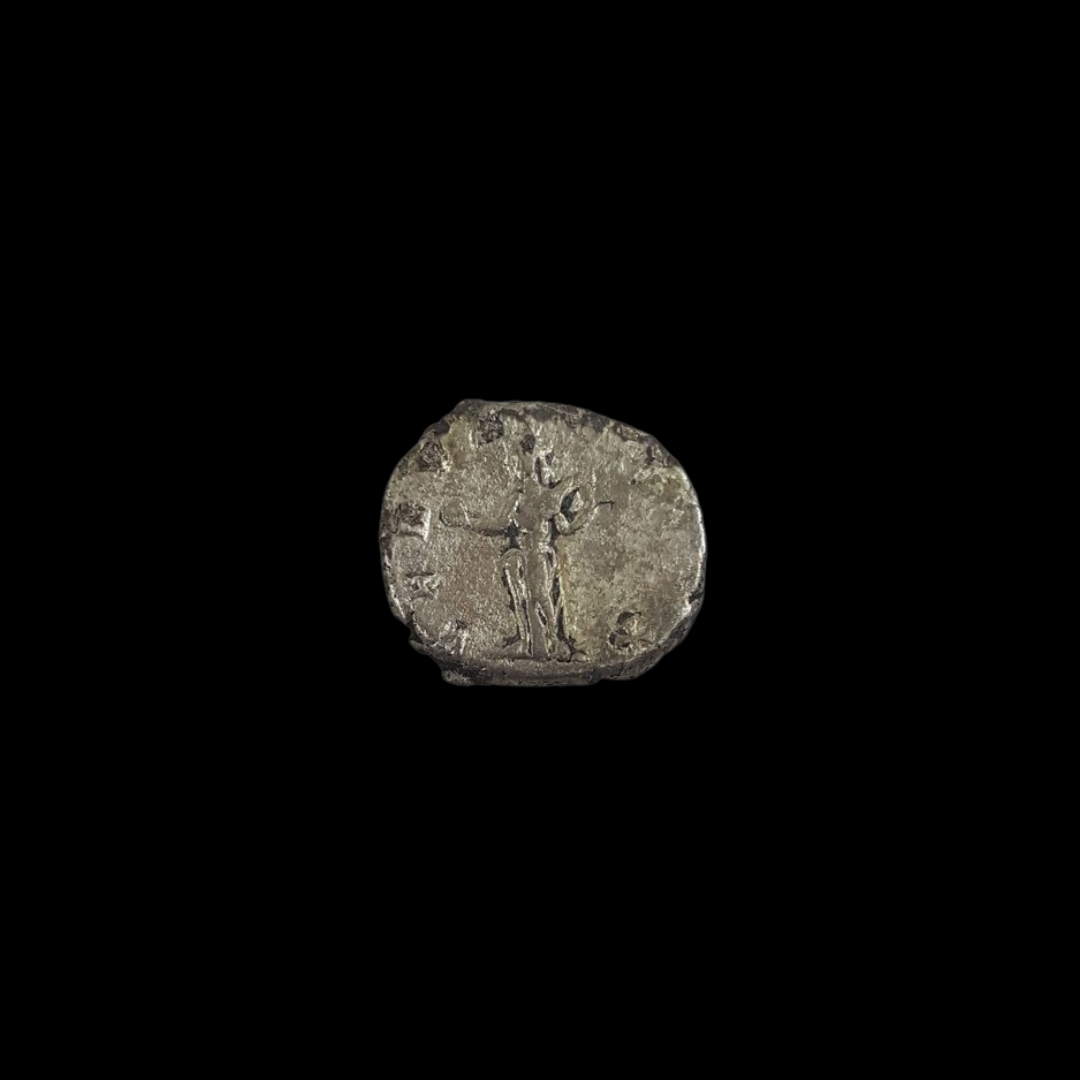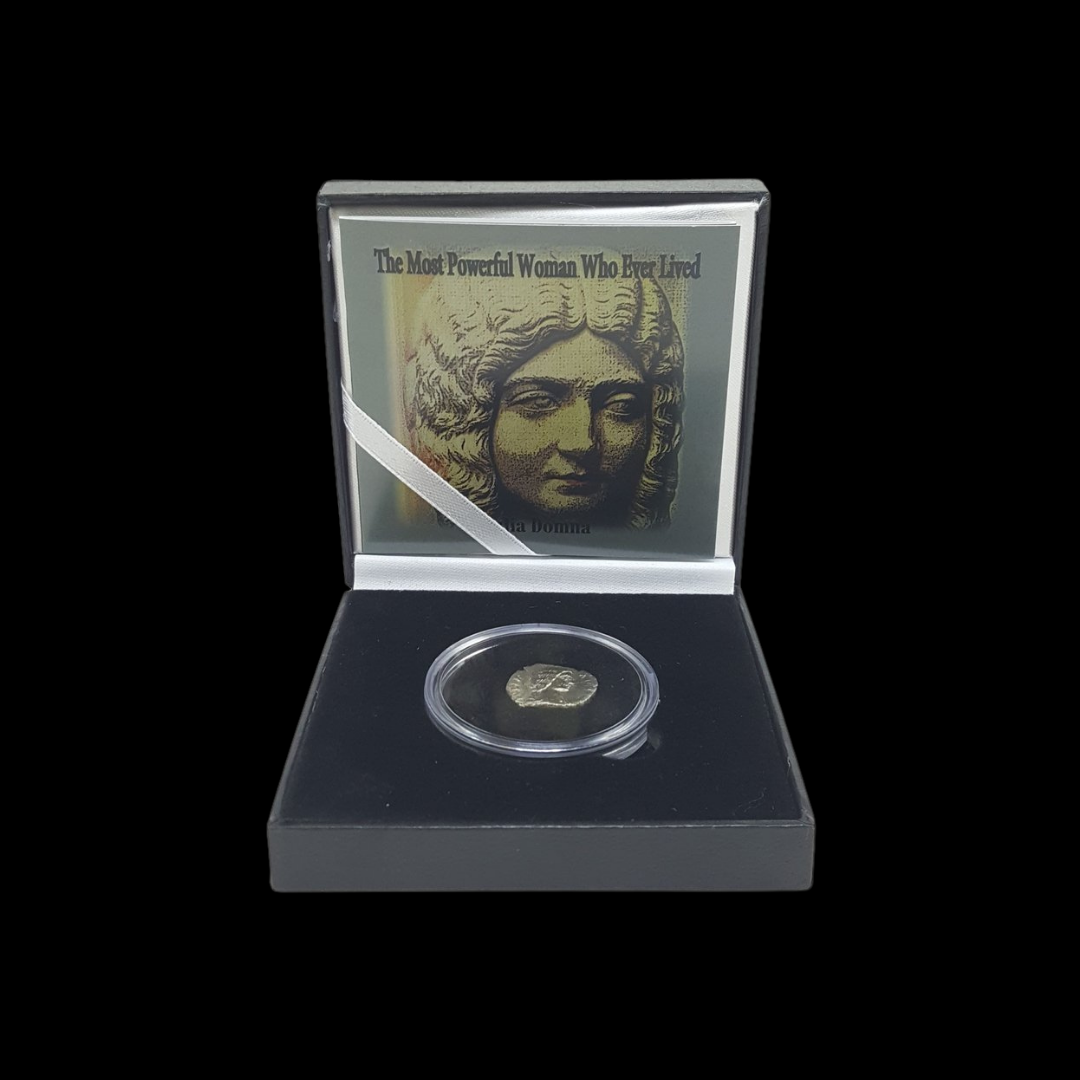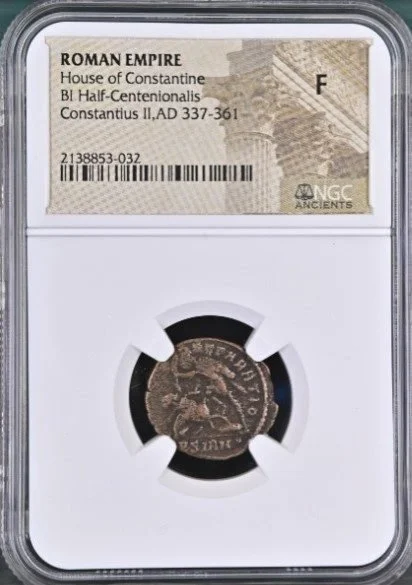 Image 1 of 6
Image 1 of 6

 Image 2 of 6
Image 2 of 6

 Image 3 of 6
Image 3 of 6

 Image 4 of 6
Image 4 of 6

 Image 5 of 6
Image 5 of 6

 Image 6 of 6
Image 6 of 6







Roman Silver Antoninianus of Salonina (about 1,765-1,772 years ago)
The coins shown are representative examples of the grade and type, but not the actual specimens for sale. For details on NGC’s grading standards and definitions, please refer to our NGC Grading page.
This silver-washed coin is an Antoninianus featuring Salonina, the wife of Emperor Gallienus who ruled during the tumultuous Crisis of the Third Century. As empress during a period of imperial instability, her coinage circulated throughout the fractured Roman Empire between approximately 253 and 268 CE.
Coin Description:
Front side: Portrait of Empress Salonina facing right, typically depicted with a stephane (crown) or diadem, with her hair styled in waves and gathered at the back, with her name and titles in Latin around the edge.
Back side: Likely features a female deity or personification such as Venus, Juno, Fecunditas (fertility), or Pudicitia (modesty) with accompanying inscriptions.
Technical Details:
Billon composition (low silver content mixed with copper)
Denomination: Antoninianus (double denarius, though with reduced silver content)
Weight: Approximately 3-4 grams
Diameter: Approximately 22-23 mm
NGC Certified and slabbed for authentication and preservation
Minted between 253-268 CE
Condition as specified by NGC certification
Historical Significance: Salonina's life reflects the dangerous political landscape of the mid-3rd century Roman Empire. Her fortunes were tied to the imperial family, suffering multiple tragedies with the capture of her father-in-law Valerian by the Persians, the suspicious death of her son Valerian II in Illyria around 258 CE, and the murder of her other son Saloninus during an army rebellion. Following her husband Gallienus's defeat and assassination in 268 CE, Salonina herself was murdered on the Senate's orders as they cleared the way for a new emperor. Her coins represent a rare glimpse of female imperial portraiture during one of Rome's most unstable periods.
The coins shown are representative examples of the grade and type, but not the actual specimens for sale. For details on NGC’s grading standards and definitions, please refer to our NGC Grading page.
This silver-washed coin is an Antoninianus featuring Salonina, the wife of Emperor Gallienus who ruled during the tumultuous Crisis of the Third Century. As empress during a period of imperial instability, her coinage circulated throughout the fractured Roman Empire between approximately 253 and 268 CE.
Coin Description:
Front side: Portrait of Empress Salonina facing right, typically depicted with a stephane (crown) or diadem, with her hair styled in waves and gathered at the back, with her name and titles in Latin around the edge.
Back side: Likely features a female deity or personification such as Venus, Juno, Fecunditas (fertility), or Pudicitia (modesty) with accompanying inscriptions.
Technical Details:
Billon composition (low silver content mixed with copper)
Denomination: Antoninianus (double denarius, though with reduced silver content)
Weight: Approximately 3-4 grams
Diameter: Approximately 22-23 mm
NGC Certified and slabbed for authentication and preservation
Minted between 253-268 CE
Condition as specified by NGC certification
Historical Significance: Salonina's life reflects the dangerous political landscape of the mid-3rd century Roman Empire. Her fortunes were tied to the imperial family, suffering multiple tragedies with the capture of her father-in-law Valerian by the Persians, the suspicious death of her son Valerian II in Illyria around 258 CE, and the murder of her other son Saloninus during an army rebellion. Following her husband Gallienus's defeat and assassination in 268 CE, Salonina herself was murdered on the Senate's orders as they cleared the way for a new emperor. Her coins represent a rare glimpse of female imperial portraiture during one of Rome's most unstable periods.



























